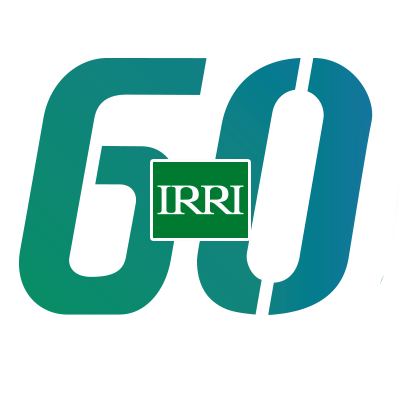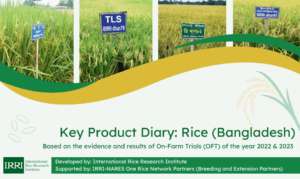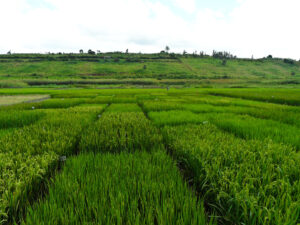A study of the rice milling industry would provide the overall context within which to examine the drivers and barriers to the growth of the rice sector ultimately to contribute to rice self-sufficiency in Nepal. Therefore this matter is of vital importance in formulating a rice research strategy for Nepal to achieve food and nutritional security and the Sustainable Development Goals (SDGs).

Rice is Nepal’s most important staple food crop and an important source of income for the farmers. About 73% of rice is produced in the Terai, 24% in the hills, and 4% in the high hills. Rice is critical to food and nutrition security (67% of total cereal consumption and 23% of protein intake), employment, and income for farmers in addition to its contribution to the economy; e.g., 20% to Agricultural Gross Domestic Product and 7% to GDP.

With improved road infrastructure, urbanization, and higher income, more people in the hilly and mountainous regions of Nepal are also switching to rice-based diets and the demand for all categories of rice, including branded fine, aromatic, and long-grain rice, is increasing. However, the country’s rice production is a shortfall of about one million tons of milled rice, spurring increasing rice imports. Time-series data show that rice production grew at the rate of 1.8% per annum from 1961-63 to 2010-12 which was below the population growth rate of 2.3% per annum.
Current rice production and productivity need to be substantially increased to meet the increasing demand for rice. However, Nepal lacks the technical capacity and appropriate milling technologies and has a weak private sector; therefore, the country needs support to meet these challenges.
Nepal imports rice worth more than USD 300 million each year, mainly from India. As a major drain on the national budget, this also has adversely affected development as this money could be used to address food and nutrition security, reduce rural poverty, and deliver the SDGs.
Nepal’s rice producers are mainly subsistence and semi-subsistence in nature. Most farmers sell paddy immediately after harvest to fulfill their cash requirements. But profit margins vary in the rice value chain because of market imperfections, unequal bargaining power among different actors, and unavailability of market information in a timely manner. If the value-chain actors know the benefit of participating in an improved value chain, this will ensure the optimum quality of paddy and rice, which in turn will also increase the ultimate consumer’s welfare.
Milling, upgrading, and value-chain development have significant implications for food security, poverty alleviation, and overall economic development.
The rice milling industry has a vital role in the overall rice value chain for product differentiation and value addition to paddy after the milling process to produce intended products such as brown rice, polished rice, parboiled rice, and steamed rice. An efficient rice milling machine should ensure consistency in the quality of the end product and hence enhance the economic value of the raw material.
Handling large volumes of rice consistently with the least recurring costs by conserving energy and properly using human resources are the desirable features of a modern rice mill. A modern rice processing machine, vis-à-vis an outdated one, produces consistent-quality products with as much as 3% – 5% less breakage of rice grains, a net power saving of 15% – 20%, and practically negligible downtime.
Rice millers in Nepal perform three major functions in the value chain:
1) purchasing paddy,
2) milling paddy, and
3) selling rice and by-products.
The performance and efficiency of rice mills in terms of head rice recovery, milling percentage, and quality of milled rice depend on many things: quality of paddy, appropriate milling technology to match with the grain type of rice, efficiency, and high throughput of machines.
We believe that this study is the first of its kind in Nepal. No literature or empirical studies appear to be available about rice milling technology and the current state of the industry in terms of various constraints and opportunities in Nepal. Moreover, research on the rice milling industry, rice product differentiation, product development, and branding in Nepal is also limited.
A study of the rice milling industry would provide the overall context within which to examine the drivers and barriers to the growth of the rice sector ultimately to contribute to rice self-sufficiency in Nepal. The rice milling industry ultimately dictates the type of rice varieties that can be grown and processed in a country and therefore this matter is of vital importance in formulating a rice research strategy for Nepal to achieve food and nutritional security and the SGDs.
The following recommendations are strategic for the overall improvement of the rice sector including the rice processing industry in Nepal:
1) Priority should be given to the commercialization of recently released (as rice production systems in Nepal are dominated with old and obsolete varieties) multi-stress-tolerant, high-yielding, fine, medium-fine, long, and extra-long slender rice varieties using best management practices and precision rice farming to produce enough marketable surplus to cater to the needs of Nepal’s rice milling industry.
2) High-yielding and high-value local rice landraces should be promoted through geographical indication (GI) to decrease rice imports.
3) The rice processing industry could be upgraded by introducing modern, appropriate, cost-effective milling and drying technologies.
4) Developing capacity of rice processing industry in high throughput milling for processing steamed, parboiled, and polished rice including developing the skilled workforce in packaging and branding.
5) A scientific pricing policy should be established considering the grain quality of rice to motivate rice farmers to grow rice varieties in demand.
6) In-country capacity for high-quality processing and branding of steamed and parboiled rice should be developed, while also developing other rice products to diminish rice imports and create new rice-based enterprising opportunities in the country.
7) An appropriate national rice strategy and policies should be developed considering the political economy of rice in Nepal.
8) Since the study was focused on the rice millers, it was difficult to know the extent of marketable surplus available for milling by the type of rice varieties. Hence, a study on quantifying the volume of marketable surplus by rice varieties and by agro-ecological regions will be important for contributing to developing a practical rice strategy for Nepal.
Read the full study:
Joshi, K.D., Upadhyay, S., Chaudhary, P., Shrestha, S., Bhattarai, K., Khan, A.I. and Tripathi, B.P. (2020) The Rice Processing Industry in Nepal: Constraints and Opportunities. Agricultural Sciences, 11, 1060-1080.






